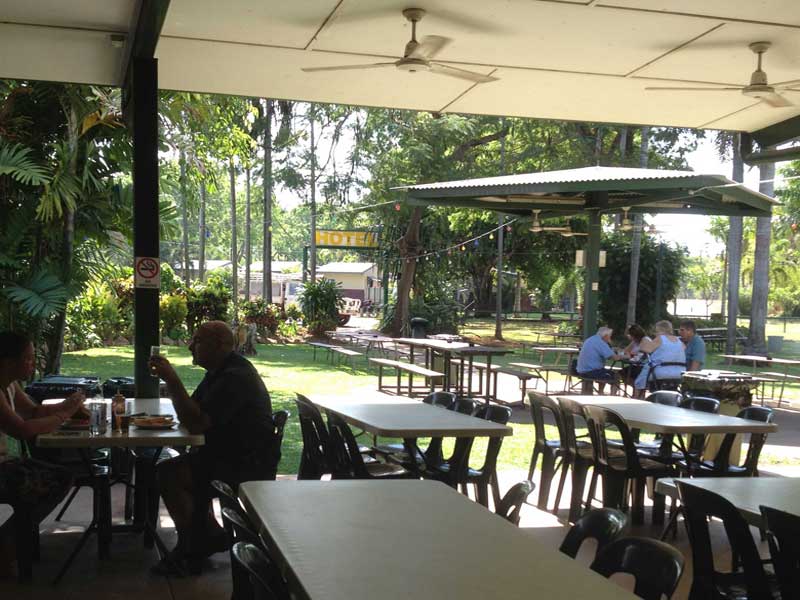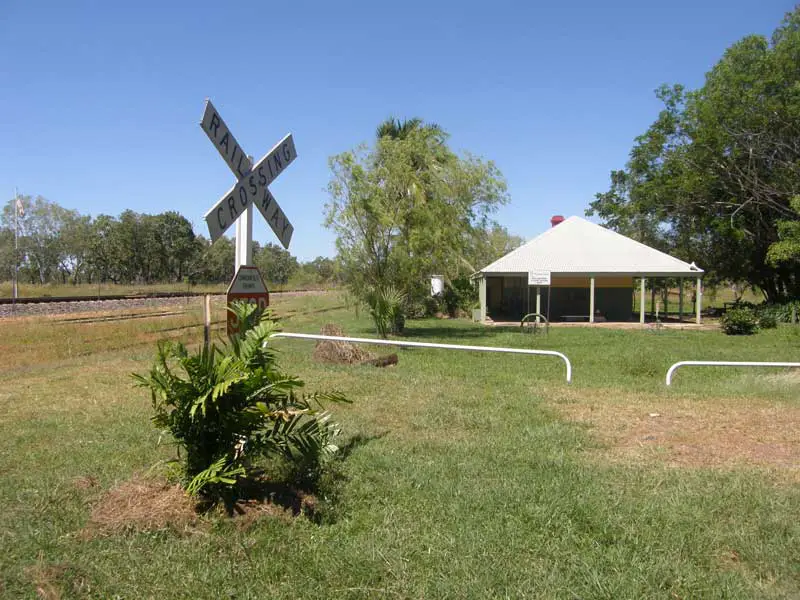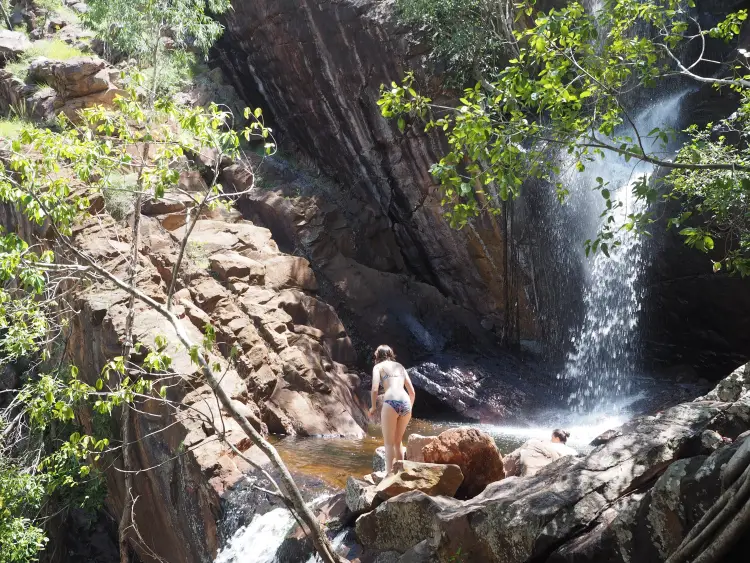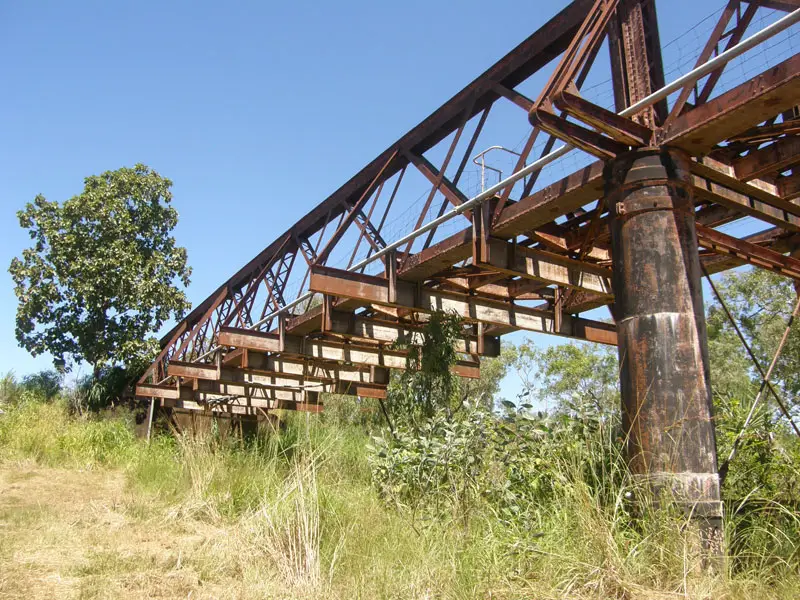North Queensland






Beyond Darwin: Adelaide River
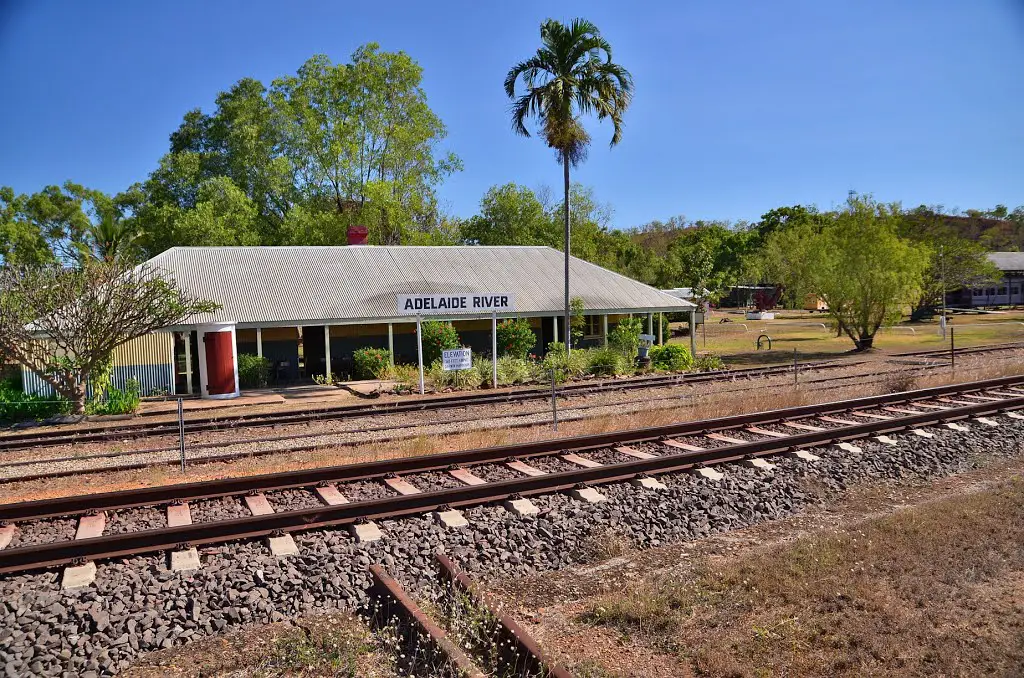
Renowned for the fresh barramundi served at the hotel on the banks of the river, Adelaide River is a small town where the Stuart Highway crosses the Adelaide River.
Location: 200 km north-east of Katherine and 112km south of Darwin.
Though only a very small community, Adelaide River is well worth stopping at to break a road journey between Katherine and Darwin. The town played an important role in the war effort between 1942 and 1945 as a military base and site of the 107th Australian General Hospital and 119th Australian General Hospital.
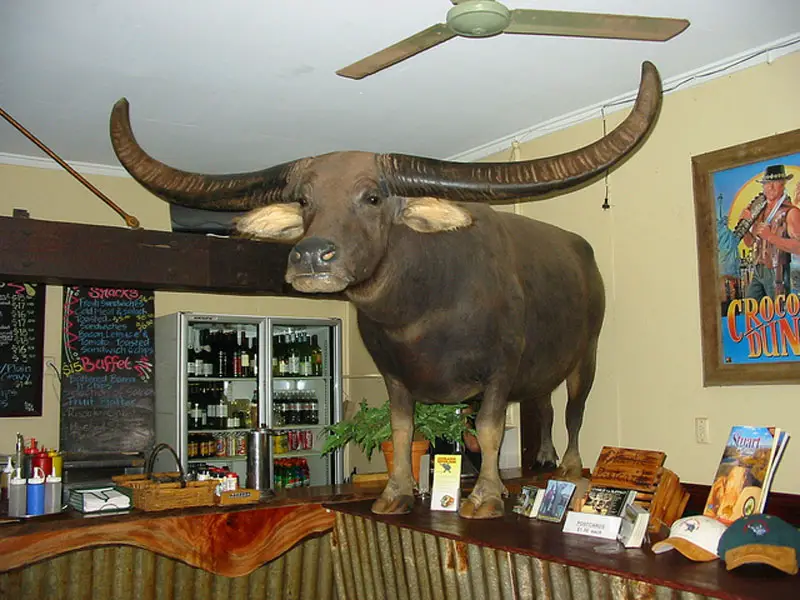
Adelaide River Inn is home of Charlie the Buffalo, from the movie Crocodile Dundee. Charlie (that’s his stage name; his real name was Nick) lived a happy retired life in a paddock next to the Inn until 2001 when he vacated it for greener pastures. When passers-by asked where Charlie had got to the reply was “Oh, he has moved to the bar now …” where he remains to this day in all his glory, but unfortunately no longer alive. Adelaide River Inn is a great place for lunch.
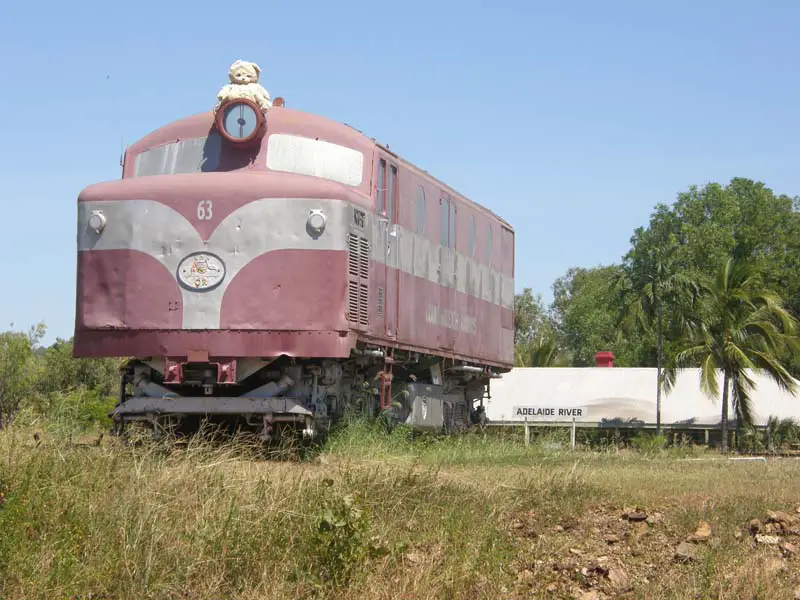
Adelaide River Heritage Centre
The Adelaide River Railway Siding and Railway Bridge, which are now part of Adelaide River Heritage Centre, were constructed as part of the first leg of the North Australia Railway (NAR) which operated from 1888 until 1976. The centre has an excellent collection of The Ghan railway memorabilia.The North Australia Railway, also known as the Palmerston to Pine Creek railway, was a 3 ft 6 in (1,067 mm) narrow gauge railway which ran from Darwin, once known as Palmerston, to Birdum, just south of Larrimah. It was the first stage in a planned railway link between Darwin to Adelaide. Commenced in 1886, the line reached Pine Creek in 1888 and officially opened on 30 September 1889. Singhalese and Indian gangs did the grubbing and earthwork and 3,000 Chinese labourers laid over one kilometre of track per day. A total of 310 bridges and flood openings were built. The Commonwealth Government took control in 1911. It promised to complete the railway from Adelaide to Darwin but gave no dates. The line was extended to near Katherine in 1917, and to Birdum in 1929 but that is far as it got.
The Federal Government promulgated an order to close the narrow gauge North Australia Railway line on 20 May 1976, with services ceasing on 30 June of that year, as result of the loss of iron ore traffic originating from the Frances Creek operation. Maintenance gangs were withdrawn in December 1977. Heavy floods in 1978 destroyed parts of the railway, effectively eliminating any hope of the railway re-opening. Nearly 20 years later, the AustralAsia Rail Corporation a consortium was formed to build the standard gauge link between Alice Springs and Darwin. Construction on the new standard gauge line from Alice Springs lasted from July 2001 to 17 September 2003. The first freight train reached Darwin on 17 January 2004 and the first Ghan passenger service ran from Adelaide to Darwin in early February 2004. The line runs near the route of the North Australia Railway in places but uses very little of the old infrastructure.
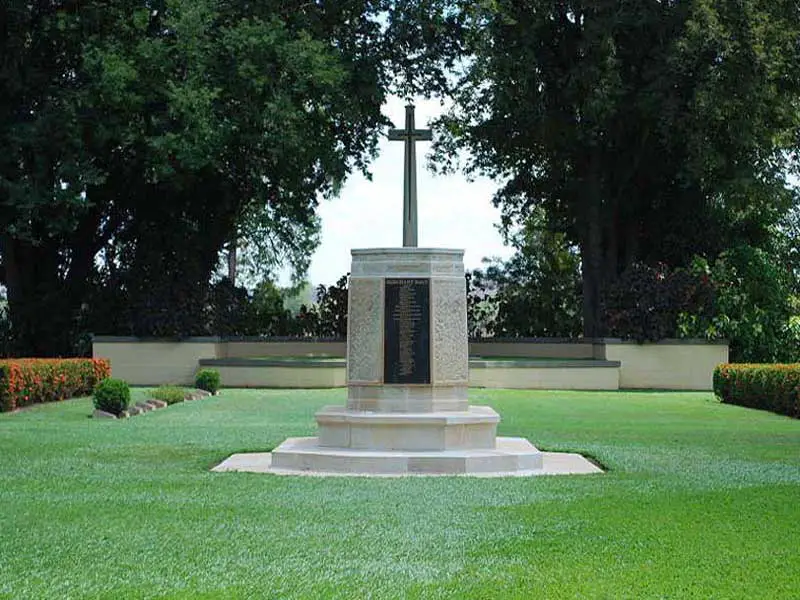
Adelaide River War Cemetery
Adelaide River War Cemetery is the third largest war cemetery in Australia. 434 servicemen and 54 civilians who were killed by Japanese air-raids in Darwin during World War II were laid to rest here. During the war, The 107th Australian General Hospital and 119th Australian General Hospital were set up around Adelaide River.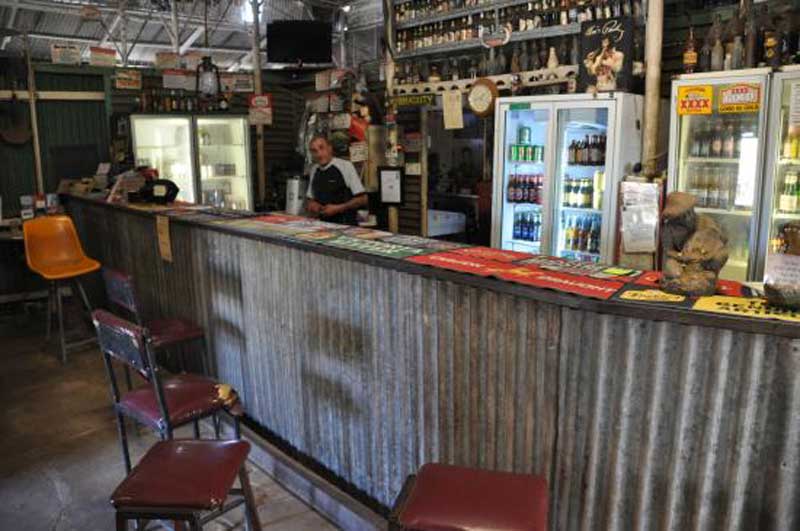
Grove Hill
The Grove Hill Heritage Hotel and Museum, located in Grove Hill, is the original hotel situated on the old stretch of the Stuart Highway and North Australia Railway 16 kilometres off the Stuart Highway in the middle of nowhere. Situated south of Adelaide River, Grove Hill was an area rich in early territory mining – in a very harsh environment. Grove Hill Heritage Hotel and Museum is housed in a residence built in 1934 entirely from recycled materials during the depression, and is today just as much a museum as it is a pub, proudly displaying relics of the gold rush era.Rusted shovels are hung by the bar and old photographs line one wall – full of memories tracing back to 1934, when the hotel was first built using materials abandoned at mining sites. Visitors can explore the area, venturing to the old mines and Crystal Hill where you can fossick for crystals or buy a piece of the Grove Hill history in the form of a gold nugget. The hotel offers meals, friendly service, free camping and caravan sites and airconditioned demountable rooms.
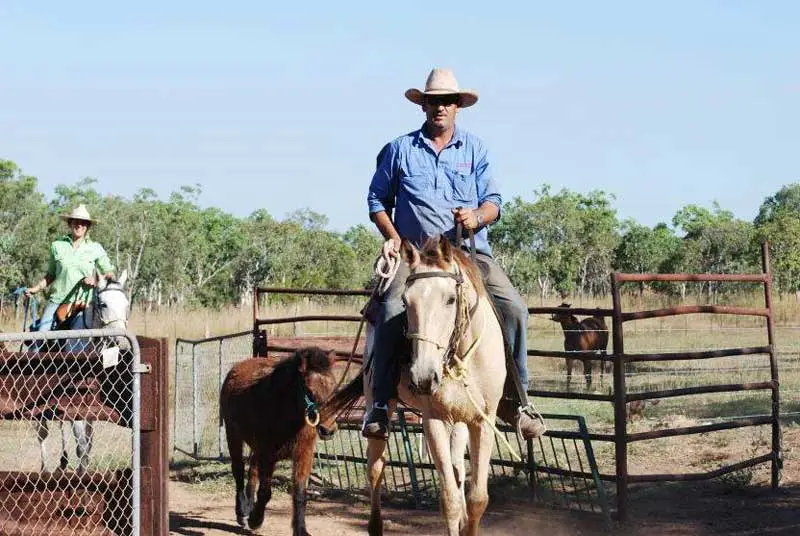
Mount Bundy Station
Mount Bundy Station, 3 km north of the town, is a great spot for fishing, walking and swimming. Established in 1911, one of the first in the Northern Territory, the station originally occupied an area of 834 square miles (2,160 km2) with the boundaries once located within Litchfield National Park and Kakadu National Park.[ Mount Bundy was established by brothers Frank and Hubert Fred Hardy who were both renowned buffalo hunters. Fred died when he fell from his horse at Mount Bundy in 1940 aged 59 years. During the second world war the American forces set up an airbase at Mount Bundy for repairing bombers. The property today includes a tourist resort.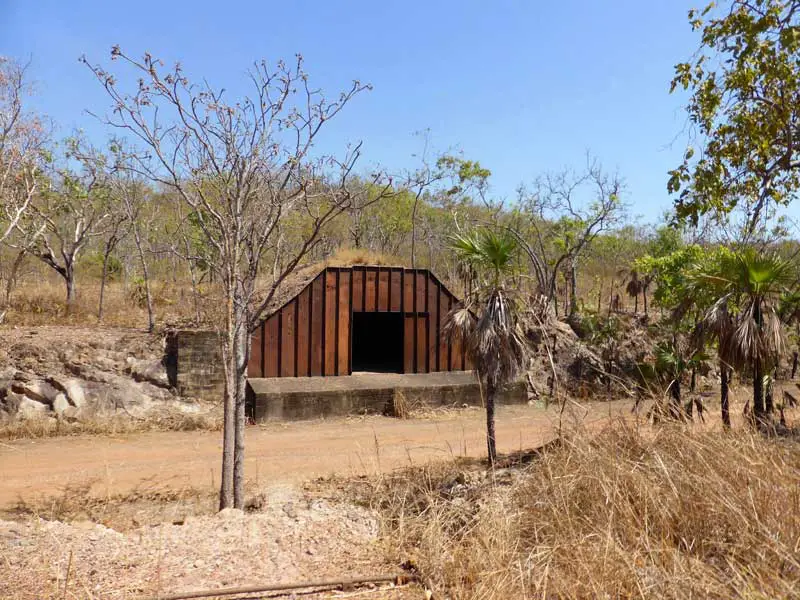
Snake Creek Armament Depot
The historical military base of Snake Creek Armament Depot still stands. The site consists of a central administration and accommodation area, recreational facilities and water tanks. A railway spur line runs through the site. The base has various types of structures which demonstrate the diversity and complexity of structures comprising a large military ordnance depot of this type. The timber framed storage buildings and laboratories are unique and are the last remaining from the War. It is one of the major fixed installations built during World War II and is the largest of its type in the Northern Territory. Phone: (08) 8999 5051.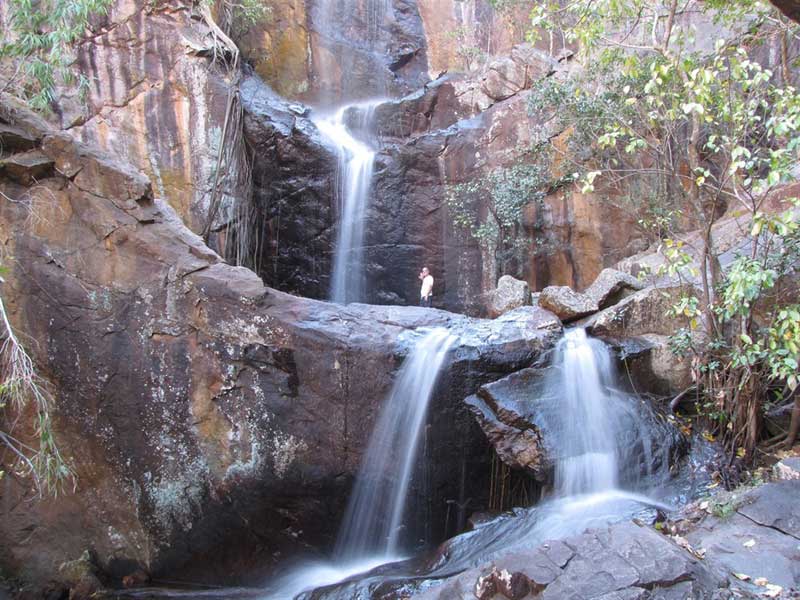
Robin Falls
3 km south of Adelaide River, off Dorat Road on the way to Daly River, is a pleasant waterfall and pool at the end of a 10 minute walk called Robin Falls – a popular place to visit. Robin Falls will certainly never be named one of the prettiest waterfalls in the Territory, but it’s secluded, the water is cool and best of all – there are no crocodiles. The wet season brings humidity, heat and potential for torrential downpour at any second, but it also means that waterfalls and all the natural pools like this one are full of water, flowing fast and free.Adelaide River NT Country Music Talent Quest (every June)
Adelaide River Races (every August)
The Kungarrakan and Awarai Aboriginal peoples are acknowledged as the traditional owners of the land surrounding the present day town of Adelaide River. There was little acknowledgement of their connection to the land in the early history of the area, evidenced by the predominately European place names. Their way of life remained unchanged for many thousands of years prior to settlement.
Adelaide River was first settled by workers who arrived in the area to construct the Overland Telegraph Line. During construction, the discovery of gold at Pine Creek in 1872 had a major impact on the settlement. In 1873, a weekly mail service between Southport and a mining site further south at Yam Creek was established. This service utilised pack horses, and during the wet season months when progress was slow mail bags from the north and south were exchanged at the crossing of the Adelaide River. The following year, Mr. Edward Hopewell was awarded this mail contract and built the Q.C.E. Hotel on the river bank and a restaurant, the “Jolly Waggoner” was opened by George Doherty, increasing the importance of the area as an overnight stop for travellers. The first police station in the town was constructed in 1879.
Prior to the construction of the railway to Pine Creek, the Adelaide River crossing was the overnight stopping point for the Haimes Royal Mail Coach which linked Southport with the goldfields. This was a vital and well utilised transport link, but was a slow and uncomfortable service. Legislation providing for an upgraded transport link was passed in 1883 by the government of John Cox Bray in the form of the Palmerston and Pine Creek Railway Bill.
In 1886 a contract was signed between the Government of South Australia and construction firm C and E Millar to build the railway between Port Darwin (then known as Palmerston) and the goldfields at Pine Creek. By April 1888 the railway had reached Adelaide River. Construction of the 155 metres long steel girder across the river itself used five 31 metres spans supported on four sets of piers. The bridge was all but complete by the onset of the wet season later that year. The first train to cross reached the southern bank on 3 December 1888, followed five days later by the first scheduled service, hauled by the locomotive “Silverton”.
Pastoral and agricultural activity were stimulated with the issuing of leases for Crown Land. In 1911 brothers Frank and Fred Hardy, local buffalo hunters, established Mount Bundy Station on a 834sq mi pastoral lease near the town of Adelaide River. Using local Aboriginal stockmen to hunt and process the animals, they began exporting buffalo hide to European markets. During the 1920s, Dutch-born agriculturalist Edwin Verburg (1869-1965) established a farm in the township irrigated by a weir he constructed across the river.
Work began in 1936 on a road linking Darwin to Adelaide River. As the railway was still the primary means of transportation at this time, it was an unsealed, dry weather road that was poorly maintained. This road followed a similar route to the present day Stuart Highway. Around the same period, a road south towards the rail yards at Larrimah was also developed to a similar standard.
Adelaide River played a central role in the defence of Australia during the second world war. In 1939, the town was designated as a rest area for personnel serving in Darwin, Northern Territory.
Military activity around the area increased significantly following the first Japanese air-raids on Darwin on 19 February 1942. The immediate aftermath of these attacks led to a mass-exodus of the city’s civilian population toward the south, an event that would become known as the Adelaide River Stakes. The allied response was a significant increase of forces to rebuild and greatly expand defences in the region. A military airfield was built in the town close to the railway station, along with several others in the surrounding district including Coomalie Creek and Pell. In addition an artillery and weapons range was established at Tortilla Flats, between Coomalie Creek and Adelaide River. The town became an important tactical supply and communications base for all branches of the armed forces. In August 1942, the Adelaide River War Cemetery was established.
While there were numerous bombing raids on the surrounding outstations and facilities throughout 1942-43, Adelaide River itself was bombed only once, in the early hours of 12 November 1943. This was the last Japanese air raid on the Northern Territory. At the height of hostilities, there were up to 30,000 Australian Army and United States soldiers based near the town. An ammunition dump, including a spur railway line, was established at Snake Creek, 3.2 km to the north. Whilst the facility became operational towards the end of the war, it was too late to be useful in the war effort. Additional rail sidings were built at the town station to serve ambulance or “hospital” trains that brought wounded personnel to the field hospitals in the area. In addition to many transient units, the 107th Australian General Hospital and 119th Australian General Hospital were set up within Adelaide River.
On 11 January 1962, Adelaide River was officially proclaimed a town. Declining passenger numbers on the North Australia Railway led to services on the line being suspended in 1976. The line was officially closed in 1981 along with the Adelaide River station, but even with maintenance gangs withdrawn, the yard and facilities remained mostly intact. The 1888 bridge continued to be used as a river crossing to convey traffic on the Stuart Highway. A second crossing, this time dedicated to road transport, the Edwin Verburg Bridge, now carries the highway across the river. It was opened on 27 March 1980 by Chief Minister Paul Everingham. The bridge was named for the pioneering agriculturalist who established an early farm in the town.
